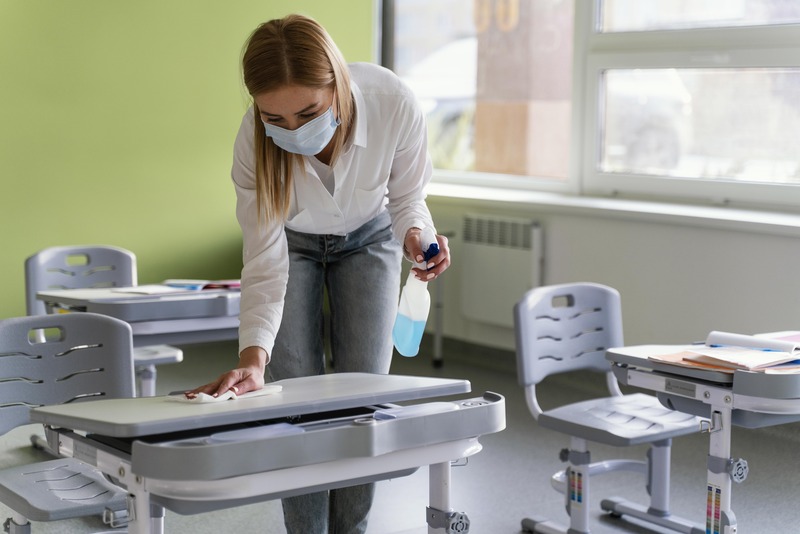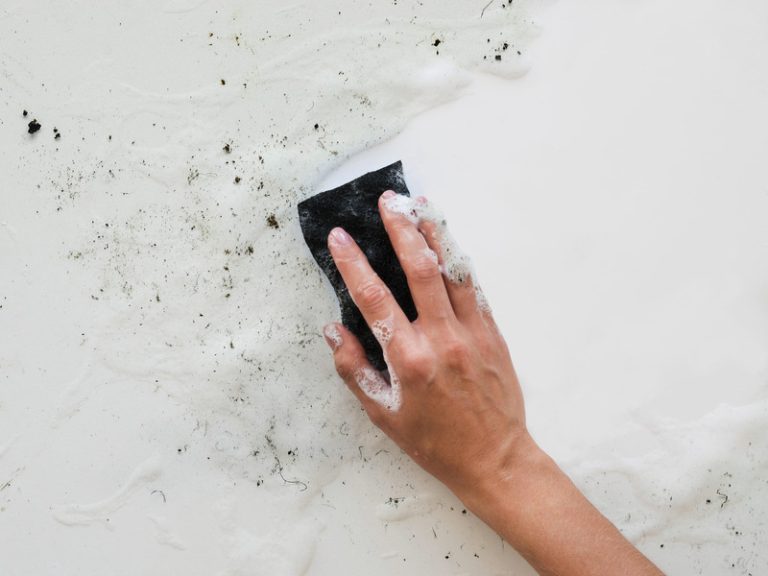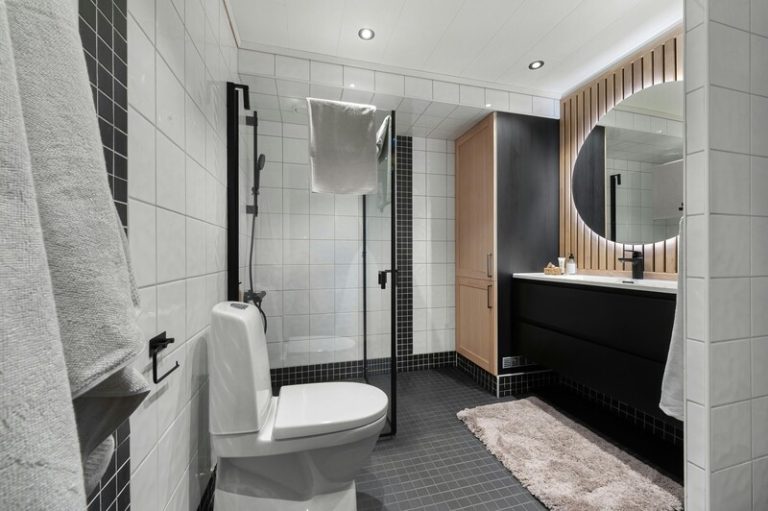School cleaning is essential for creating a safe and healthy environment for students and staff. Therefore, you should know how to clean schools.
A clean school offers numerous benefits, from reducing the spread of illnesses to enhancing the learning environment. But what steps should be taken to ensure a school is properly cleaned? Who is responsible for this important task? And how often should schools be cleaned?
We will explore the importance of school cleanliness, the benefits of a clean school, and provide a detailed outline of how to clean schools effectively.
Key Takeaways:
- Regular cleaning of schools is important to maintain a healthy and safe learning environment for students and staff.
- Clean schools have numerous benefits, including reducing the spread of illnesses, improving air quality, and enhancing the overall learning experience.
- The key steps to clean a school include gathering supplies, decluttering and organising, dusting and wiping down surfaces, and regularly disinfecting high-touch areas.
The Importance of Cleaning Schools
Keeping schools clean is crucial for maintaining a healthy environment for students, teachers, and staff. Proper cleaning practices help reduce the spread of illnesses and ensure that educational premises remain safe and hygienic, especially in the context of combating viruses such as COVID-19.
By implementing stringent cleanliness protocols, schools can promote student health and well-being. Clean environments foster better learning outcomes and create a positive atmosphere for academic growth.
Teaching children about good hygiene practices from a young age encourages lifelong habits that safeguard against various diseases. In the current climate of the ongoing COVID-19 pandemic, maintaining a high standard of cleanliness is even more paramount.
The Benefits of a Clean School
A clean school environment offers numerous benefits, including improved air quality, reduced absenteeism among students and staff, enhanced learning experiences in classrooms, and effective control of germs and bacteria. Maintaining cleanliness in schools not only ensures a healthy space but also creates a positive atmosphere for education.
The impact of a tidy school environment on staff and students cannot be overstated. Staff members are likely to be more motivated, efficient, and focused in a clean setting. Students, on the other hand, tend to exhibit improved behavioural patterns and academic performance in environments that are organised and free of clutter. Proper sanitation protocols not only prevent the spread of illnesses but also instil good hygiene habits early on.
Parents play a crucial role in promoting cleanliness within the school community. By teaching children the importance of sanitation and ensuring they follow proper hygiene practices, parents contribute to a healthier environment for all. Encouraging children to use designated rubbish bins, wash hands regularly, and keep their personal belongings organised can go a long way in maintaining cleanliness.
Following a rigorous cleaning checklist ensures that all areas of the school are thoroughly sanitised and maintained. It helps in identifying specific cleaning tasks, establishing routines, and tracking progress. Incorporating keywords related to cleanliness, such as ‘sanitisation,’ ‘disinfection,’ and ‘hygiene,’ in school policies and communication materials reinforces the significance of cleanliness in the educational setting.
a. Reduces Spread of Illnesses
One of the primary advantages of maintaining a clean school is the significant reduction in the spread of illnesses among students and staff. By implementing proper cleaning protocols, schools can minimise the risk of infections caused by viruses, bacteria, and other harmful pathogens.
Good hygiene practices are essential to prevent the transmission of contagious diseases within educational institutions. Regular cleaning of high-touch surfaces, such as desks, door knobs, and shared equipment, can disrupt the chain of infection. Providing hand sanitisers and promoting handwashing habits among students fosters a healthier environment, leading to fewer sick days and improved academic performance. By prioritising cleanliness in schools, administrators can create a safer space for learning and protect the well-being of their school community.
b. Improves Air Quality
Maintaining cleanliness in schools contributes to improved air quality, creating a healthier environment for students and staff. Regular cleaning of classrooms, common areas, and ventilation systems helps eliminate dust, allergens, and germs that can affect indoor air quality negatively.
Clean surroundings are crucial for ensuring that students have a safe and healthy learning environment. By removing allergens and contaminants through diligent cleaning practices, schools can mitigate the risk of respiratory issues and enhance overall well-being. Promoting sanitation and proper waste management further aids in reducing pollutants in the air. Regular maintenance and cleanliness routines also extend the lifespan of school facilities and equipment, ensuring a sustainable and conducive setting for academic activities.
c. Enhances Learning Environment
A clean school environment enhances the overall learning experience for students. Clean and organised classrooms promote focus, productivity, and well-being, leading to reduced absenteeism and creating a positive educational atmosphere that is conducive to effective teaching and learning.
When students walk into a tidy classroom, their minds are better prepared to absorb information and engage in lessons. Clutter-free spaces minimise distractions, allowing learners to immerse themselves fully in the educational process. Parents play a crucial role in instilling cleanliness values in children, and schools can amplify this by implementing a standardised cleaning checklist. This not only ensures consistent cleanliness but also teaches students the importance of maintaining their surroundings. Ultimately, a clean environment cultivates a sense of pride and respect, fostering a holistic approach to education.
Step-by-Step Instructions on How to Clean Schools
Cleaning a school requires a systematic approach that includes gathering supplies, decluttering, dusting and wiping surfaces, cleaning floors, disinfecting high-touch areas, emptying rubbish bins, restocking bathrooms, and addressing any specific cleaning needs. Caretakers play a key role in maintaining the cleanliness and hygiene of school premises.
Starting with decluttering, caretakers clear out any unnecessary items or clutter that may impede the cleaning process or harbour germs. Once the area is clear, they proceed to dust and wipe all surfaces thoroughly, ensuring a clean environment. Cleaning and disinfecting the floors come next, with special attention given to high-traffic areas and spots prone to spills.
Disinfecting high-touch areas like door handles, light switches, and desks is crucial for preventing the spread of germs. Below is a further explanation of how to clean schools.
a. Gather Supplies
The first step in cleaning a school is to gather the necessary cleaning supplies and equipment. Caretakers should ensure they have all the required items, such as disinfectants, mops, vacuums, and safety gear, before proceeding with the cleaning process.
Having a well-stocked inventory is crucial for caretakers to efficiently manage the cleanliness of the school premises.
- Disinfectants are essential for killing germs and viruses that can spread among pupils and staff.
- Mops are necessary for wiping down floors, while hoovers help in cleaning carpets and upholstery.
- Safety gear, like gloves and masks, protects caretakers from harmful chemicals.
- Plus these basics, caretakers may also need specialised cleaners for different surfaces, rubbish bags for waste disposal, and cleaning trolleys to transport supplies conveniently.
b. Declutter and Organise
Before starting the cleaning process, it is essential to declutter and organise the school spaces, including classrooms, storage areas, and common rooms. Janitors should prioritize removing unnecessary items and ensuring that the environment is conducive to effective cleaning.
Decluttering and organising school spaces before cleaning, not only creates a more pleasant and visually appealing learning environment but also plays a crucial role in promoting productivity and student well-being. Clearing out clutter can help reduce distractions and streamline daily routines, ultimately enhancing the overall efficiency of school operations. Janitors, as the frontline custodians of cleanliness, play a pivotal role in upholding the organisation and cleanliness standards, ensuring that students and staff can focus on learning and teaching without unnecessary hindrances.
c. Dust and Wipe Down Surfaces
Dusting and wiping down surfaces is a critical step in school cleaning to remove dust, dirt, and allergens. Janitors should focus on high-traffic areas, desks, chairs, shelves, and other surfaces to ensure a clean and hygienic environment for students and staff.
When targeting high-traffic areas, janitors often pay special attention to door handles, light switches, and classroom equipment that are frequently touched by multiple individuals throughout the day. These spots are prime breeding grounds for germs and bacteria, making them crucial spots for thorough cleaning.
Using appropriate cleaning techniques is essential to effectively remove dust and grime. Microfibre cloths are commonly used as they trap dirt particles instead of just spreading them around, leading to a more thorough cleaning.
d. Clean Floors
Cleaning floors is an essential aspect of maintaining school hygiene. Janitors must use appropriate cleaning methods and products to ensure that floors are free from dirt, stains, and germs, contributing to a safe and clean environment for students and staff.
Regular floor cleaning also helps in preventing the spread of illnesses and reducing absenteeism among students. By keeping the floors clean, janitors play a crucial role in promoting a healthy learning environment.
Disinfection practices are particularly important in schools to kill harmful bacteria and viruses that can easily spread through contact with dirty surfaces. Clean floors not only enhance the aesthetics of the school but also help in creating a more pleasant atmosphere conducive to learning.
e. Disinfect High-Touch Areas
Disinfecting high-touch areas such as door knobs, handrails, light switches, and shared equipment is crucial in preventing the spread of germs and viruses in schools. Caretakers should use EPA-approved disinfectants and follow proper guidelines to ensure thorough disinfection.
Regular disinfection not only helps in maintaining a healthy environment but also plays a significant role in reducing absenteeism among students and staff. By targeting these common contact points, caretakers create a barrier against potential infections. Proper training for janitorial staff on effective disinfection techniques and the correct use of cleaning products is essential. Emphasising the importance of hygiene practices ensures that the school environment remains safe and conducive to learning.
f. Empty and Clean Rubbish Bins
Regularly emptying and cleaning rubbish bins is essential for waste management and sanitation in schools. Caretakers should follow proper disposal procedures, use protective equipment, and maintain cleanliness standards to promote a hygienic environment.
By regularly monitoring the rubbish bins, school staff can prevent overflowing bins and potential health hazards caused by pests attracted to the accumulated waste. Implementing a clear recycling programme and educating students on the importance of separating recyclables from general waste can significantly reduce the environmental impact of school operations.
Proper waste disposal contributes to a sustainable school environment that fosters a culture of cleanliness and responsibility among students and staff alike.
g. Clean and Restock Bathrooms
Cleaning and restocking bathrooms is a critical task for janitors to maintain hygiene standards in schools. Proper cleaning, disinfection, and restocking of supplies ensure that students and staff have access to clean and functional restroom facilities.
Sanitation practices play a crucial role in preventing the spread of germs and illnesses in educational settings. By regularly cleaning and disinfecting bathroom surfaces, janitors help create a safe and healthy environment for everyone at school.
Ensuring that essential supplies like toilet paper, soap, and paper towels are consistently restocked is essential for promoting good hygiene habits among students. A well-stocked restroom encourages proper handwashing and overall cleanliness, reducing the risk of illness transmission.
Janitors are tasked with not only cleaning but also inspecting and maintaining bathroom fixtures to address any issues promptly. By taking a proactive approach to bathroom maintenance, schools can uphold higher hygiene standards and support the well-being of their school community.
h. Address Any Specific Cleaning Needs
Addressing any specific cleaning needs in schools requires a tailored approach by caretakers based on the unique requirements of the educational premises. Customising cleaning protocols and practices ensures that all areas are thoroughly cleaned and maintained to the highest standards.
In a school environment, cleanliness is paramount not only for the well-being of students and staff but also for creating a conducive learning atmosphere. Caretakers play a vital role in identifying specialised cleaning needs such as high-traffic areas, classrooms, canteens, and toilets. By personalising cleaning approaches, caretakers can effectively combat germs and bacteria, thus reducing the spread of illnesses.
Who is Responsible for Cleaning Schools?
Cleaning schools is primarily the responsibility of caretakers and designated cleaning staff who are tasked with maintaining the cleanliness and hygiene of educational facilities. Caretakers play a crucial role in ensuring that schools are clean, safe, and conducive to effective learning.
They are responsible for sweeping, mopping, dusting, and disinfecting various areas within the school premises, including classrooms, corridors, toilets, and communal areas. Caretakers are often tasked with emptying bins, replenishing supplies, and ensuring that the environment is free of hazards that could potentially harm students or staff.
Caretakers also play a key role in preventing the spread of germs and illnesses by maintaining high standards of cleanliness and following proper sanitation protocols. By upholding these standards, they contribute significantly to the overall health and well-being of everyone in the school community.
How Often Should Schools be Cleaned?
After knowing step by step how to clean schools in detail, then you also have to know exactly how often this activity should be done.
Schools should undergo regular cleaning routines that encompass daily, weekly, and monthly tasks to ensure optimal cleanliness and hygiene standards. By following a structured cleaning schedule, educational premises can maintain a healthy environment for students and staff.
Daily cleaning tasks in schools often include sweeping and mopping floors, wiping down surfaces, and disinfecting commonly touched areas like doorknobs and light switches. Weekly cleaning may involve deeper tasks such as dusting, vacuuming, cleaning windows, and sanitising bathrooms. Monthly routines cover more extensive cleaning like cleaning out air vents, shampooing carpets, and organizing storage areas to prevent clutter. Adhering to these schedules not only enhances the physical appearance of the school but also plays a crucial role in preventing the spread of germs and illnesses.
a. Daily Cleaning Tasks
Daily cleaning tasks in schools include routine maintenance activities such as sweeping, mopping, disinfecting, and rubbish removal to uphold cleanliness standards. Janitors play a key role in executing these tasks to ensure a clean and hygienic environment daily.
The responsibilities of janitors extend beyond just sweeping and mopping; they are also tasked with emptying trash bins, sanitising high-touch surfaces, and restocking essential supplies such as soap and kitchen rolls. Additionally, regular disinfection of classrooms, restrooms, and common areas is crucial in preventing the spread of germs and illnesses among students and staff. Maintaining a clean surrounding not only promotes physical health but also contributes to a positive learning environment by creating a tidy and organised space for education.
b. Weekly Cleaning Tasks
Weekly cleaning tasks in schools involve more in-depth cleaning procedures such as scrubbing floors, cleaning fixtures, and sanitising surfaces to maintain a high level of cleanliness. Caretakers focus on detailed cleaning to ensure that all areas are thoroughly sanitised and maintained.
These tasks go beyond the day-to-day maintenance carried out by the school staff, requiring a dedicated focus on disinfecting and removing deep-seated dirt and grime. Regular check-ups of ventilation systems and filters are crucial to ensure good air quality, and caretakers play a vital role in this process. The meticulous cleaning of high-touch surfaces like door handles, light switches, and desks is essential to prevent the spread of germs among students and staff.
c. Monthly Cleaning Tasks
Monthly cleaning tasks in schools involve comprehensive maintenance activities, equipment inspection, and targeted cleaning of specific areas to ensure long-term cleanliness. Caretakers focus on identifying and addressing any maintenance issues to uphold hygiene standards, and regularly checking HVAC systems, fire alarms, and plumbing for any malfunctions. They carry out targeted cleaning practices in high-traffic areas, such as corridors and canteens, to prevent the spread of germs among students and staff.
Ensuring long-term cleanliness is essential not only for aesthetics but also for health and safety reasons. By performing these monthly tasks diligently, schools can create a conducive learning environment that promotes student well-being and academic success.
That’s the explanation of how to clean schools in detail that you can grasp. From the explanation above, it can be understood that maintaining school cleanliness is important and must be done regularly.
More than that, cleaning schools must also be done in detail and systematically. Therefore, ensuring a clean and safe learning environment is essential for the health and well-being of both students and staff. To achieve this, opting for a professional and systematic commercial cleaning service like TEKA Cleaning is the best approach.
With our comprehensive cleaning solutions tailored specifically for educational institutions, we guarantee a thorough cleaning that meets the unique needs of schools and colleges.
Don’t compromise on the cleanliness and safety of your educational environment. Trust TEKA Cleaning to provide exceptional cleaning services that support a healthy, productive learning space.
Book now or give us a call on 01233 751 544 to schedule a consultation for your school’s cleaning needs. Let TEKA Cleaning take care of the cleanliness while you focus on educating the future.
Ensure your educational institution is not just a place for learning, but also a safe, clean, and welcoming space for all. Contact us today to learn more about our specialized cleaning services for schools and how we can help you maintain a pristine learning environment.
Read also:











